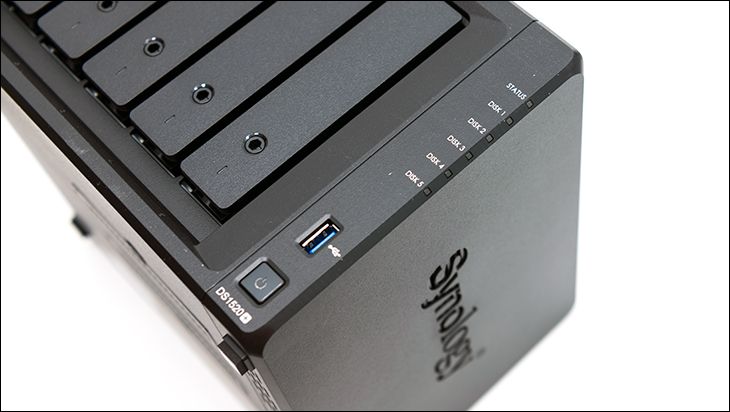Final Score: 84%
The latest generation of Synology’s “Plus” 5 bay Network Attached Storage appliance may not be perfect, but it nicely blends overall aesthetics with practicality. While it is indeed true that a metal chassis is arguably more durable, the fact of the matter is a NAS device (be it server or appliance) is meant to live its life in one location. A quite location that will not be subjected to constant bangs, bumps, or being used as a temporary shelf like a PC case would be. As such, the thick and fairly forgiving plastic is more than just ‘good enough’ as it adds a touch of style that metal cases cannot. Synology is well aware of this fact and it is why they continue to use such design year after year. Minor to moderate controversy or not.
On the hardware front the combination of an Intel Celeron “Gemini Lake” J4125 with 8 Gigabyte of RAM is more than up to the task of handling the typical entire family’s needs. It really will only be when advanced users combine Raid6 with multiple overlapping I/O requests (for example everyone in the family tries to use the NAS at the same time) that the low TDP 4 core processor will be overwhelmed. In such instances… the addition of a M.2 drive or two will boost things back up to 1GbE network saturating performance levels via caching. For those who find even this not enough… the newer 6-bay DS1521Plus would be a more optimal choice as no Celeron based model will truly satisfy your needs. Put simply the combination of five, instead of the typical four bays, with dual M.2 slots will prove to be more than enough to satisfy the typical home user for years to come and only small businesses or enthusiasts will find the DS1520+ ‘lacking’.
The software however is where Synology knock things out of the park. Many modern NAS appliances in this price range use a similar, or even same, hardware configuration. These days, almost no one should buy a NAS appliance solely on its hardware specifications. Nearly any modern NAS appliance comes with (at the very least) ‘good enough’ hardware. Instead it is the software that make or break a NAS appliance. It is here that Synology once again prove why they are the leaders of the market. Everything from the setup and installation phase to the configuration of a new NAS is both highly intuitive and as hassle free as possible. So much so that even the most novice, ‘first time NAS’ owner, will be up in running in no time flat… and in the process look like an IT god to their family. No wonder the ‘Xepenology’ bootloader for installing DSM on to homebrew hardware exists… and why no one bothers to undertake such an endeavor to make porting QNAP, ASustor, etc’s OS on to ‘other’ hardware ‘easy’.
When you then add in a good warranty, with excellent customer support, into the mix the DS1520+ not only easily justifies its asking price it makes a lot of the competition look over-priced by comparison. Just be warned, when you do use Synology, and their DS1520+, as your introduction to the wonderful world of Network Attached Storage you may just end up with a new hobby and habit. One where you may quickly find yourself spending way too much time thinking about a ‘long overdue’ 10GbE network update and their sexy Xeon and Ryzen Embed options… or maybe even a homebrew option. Just understand that once you step outside the curated NAS experience that Synology offers you quickly will find that Network Attached Storage is not as easy as Synology makes it appear. Thankfully, the inclusion of two eSATA ports for easy upgradability may help you tamp down that desire for a year or three… or may not. So be warned the DS1520+ may just end up being your gateway drug to bigger, faster… and pricier NAS options.

The Review
Synology DS1520+
When you then add in a good warranty, with excellent customer support, into the mix the DS1520+ not only easily justifies its asking price it makes a lot of the competition look over-priced by comparison.










